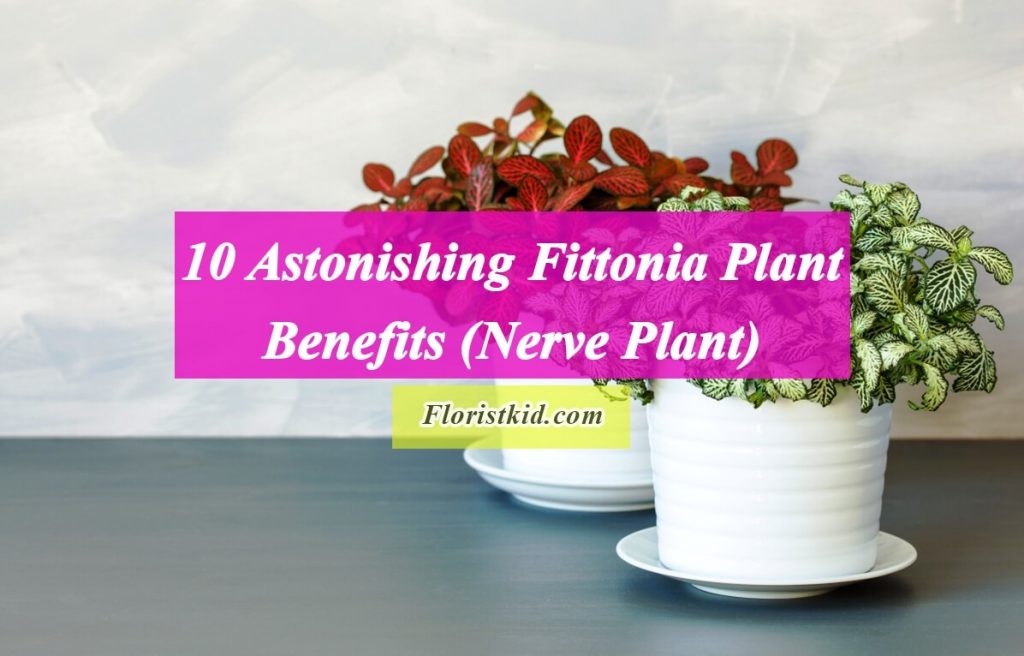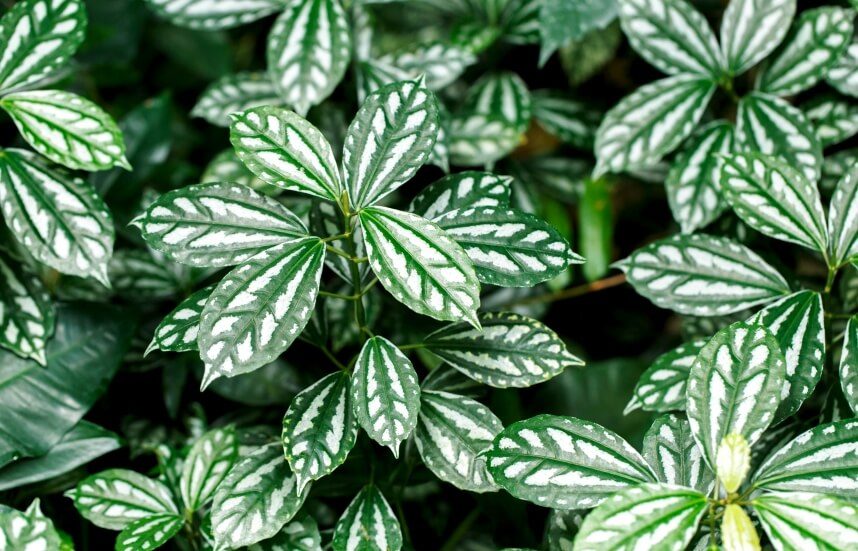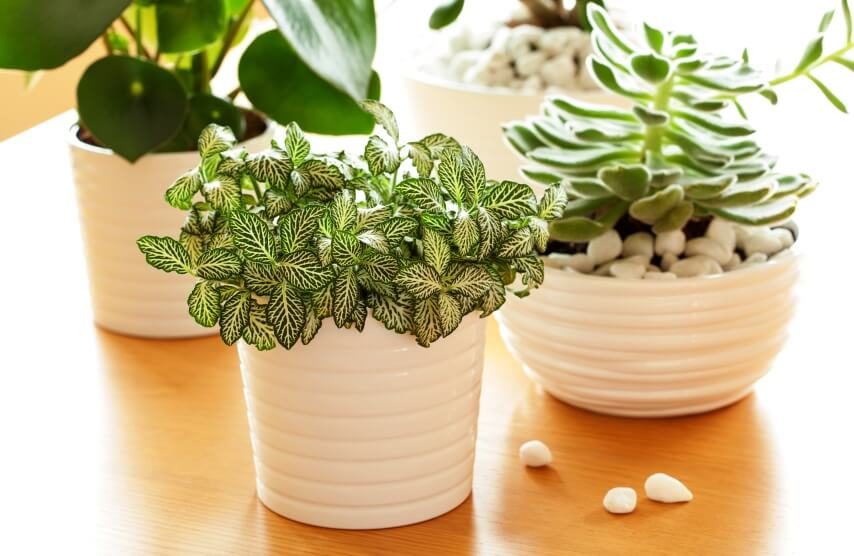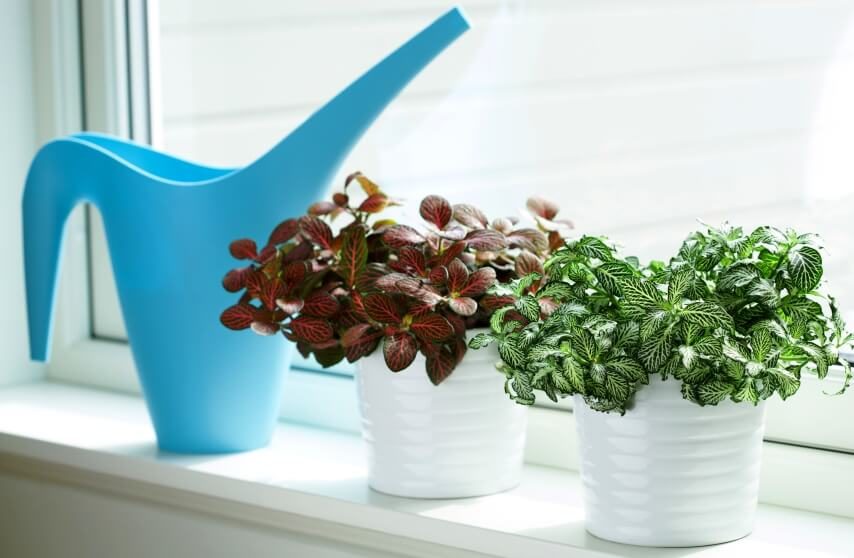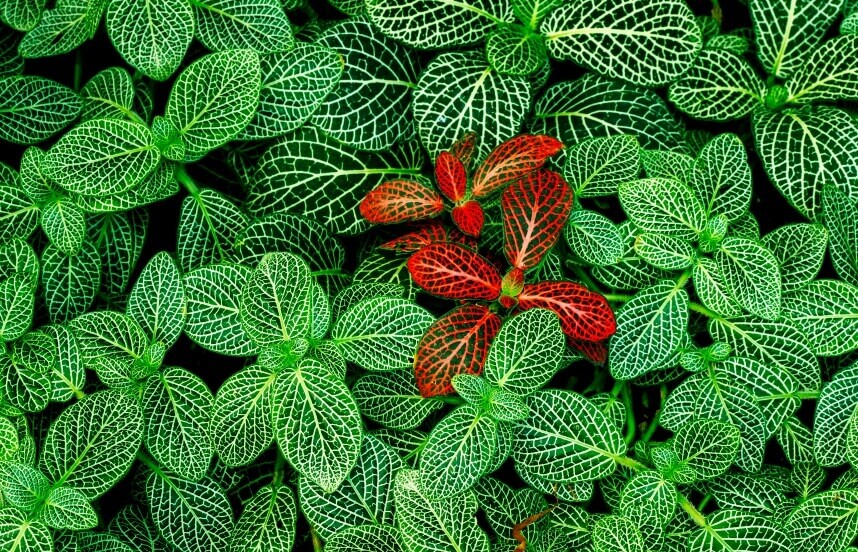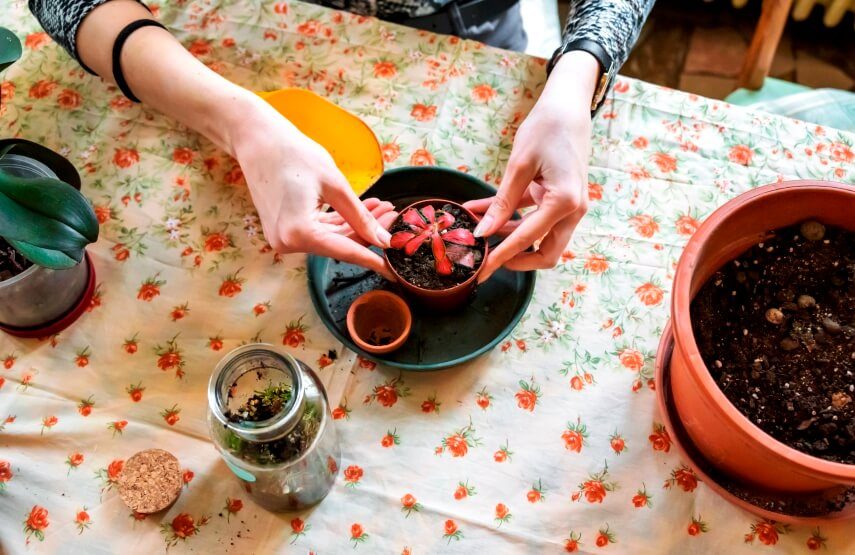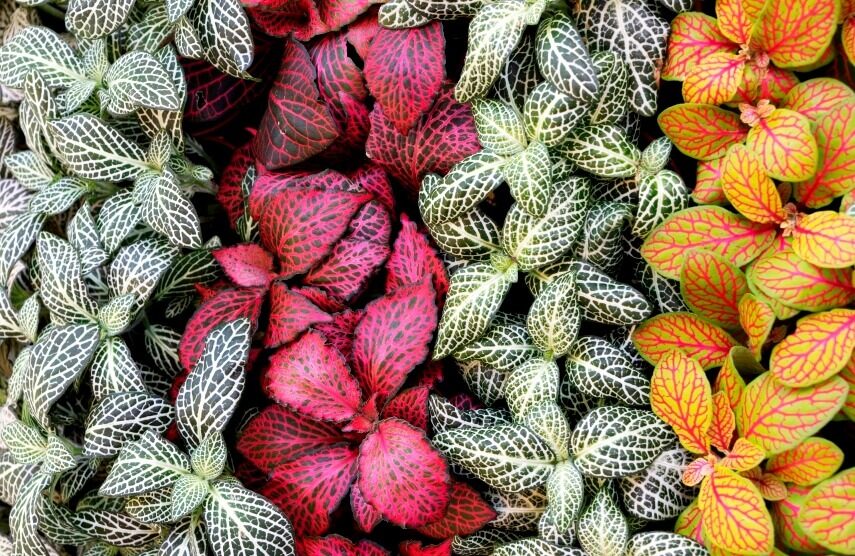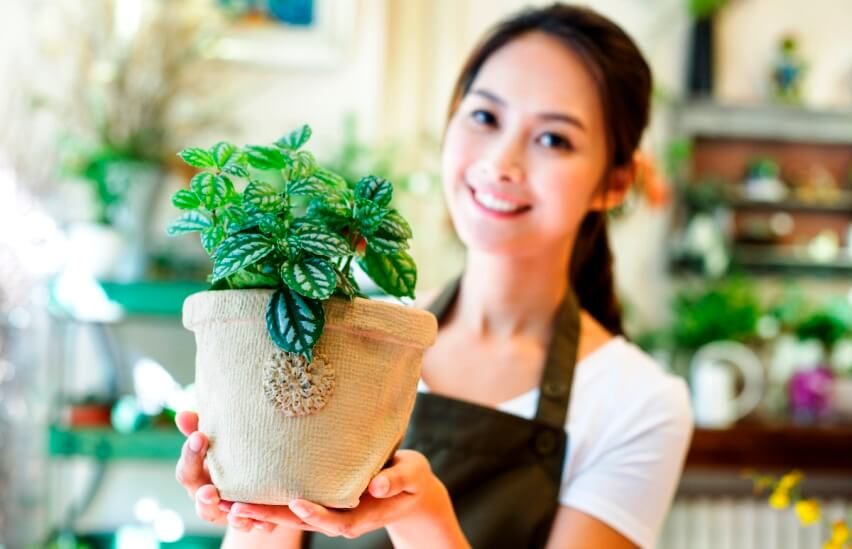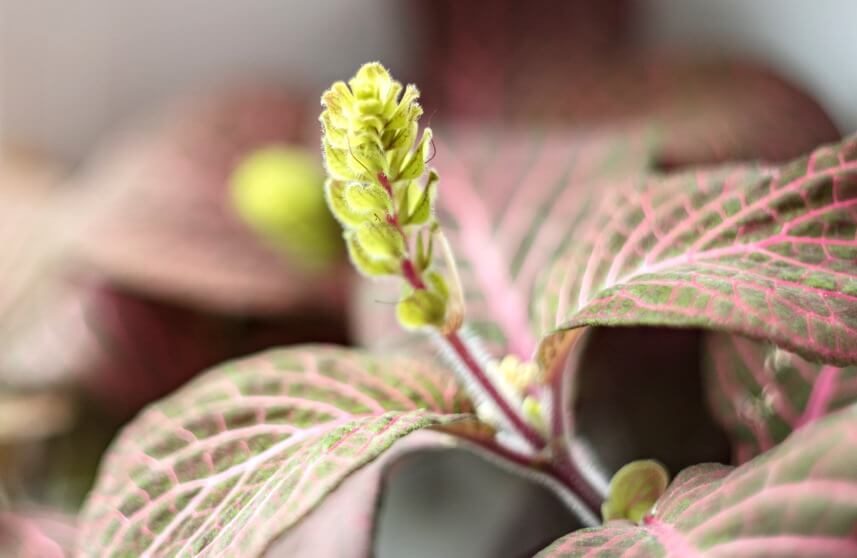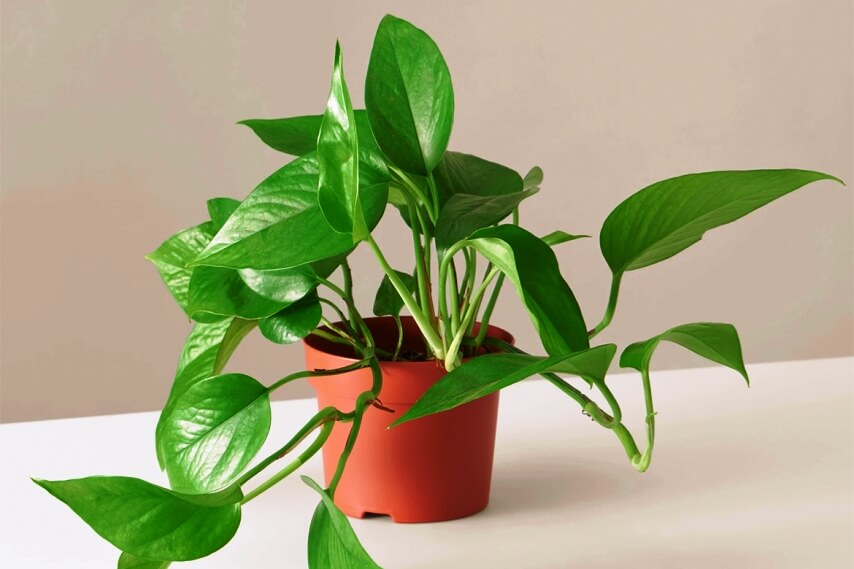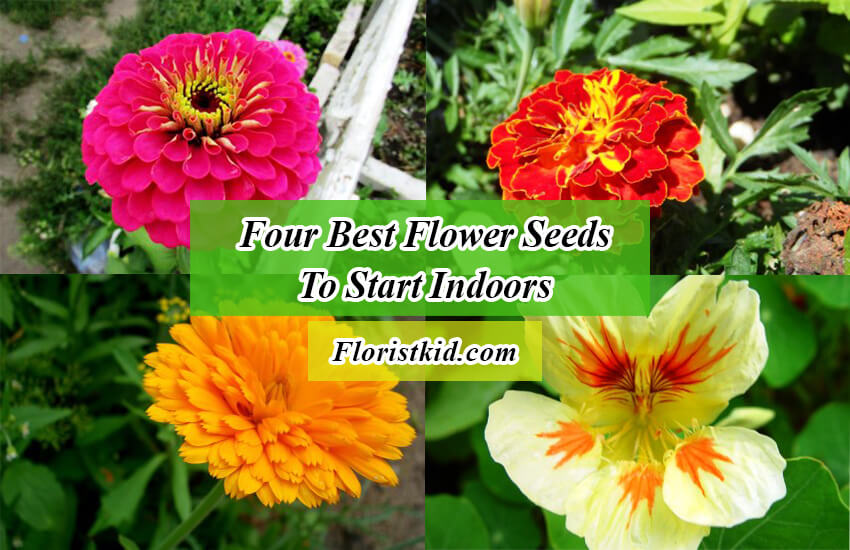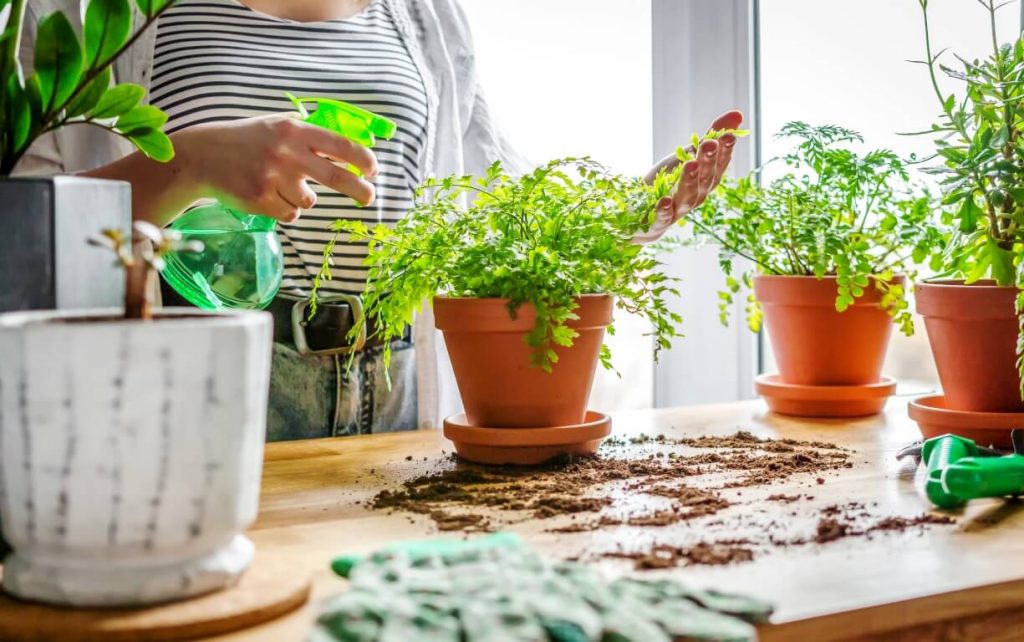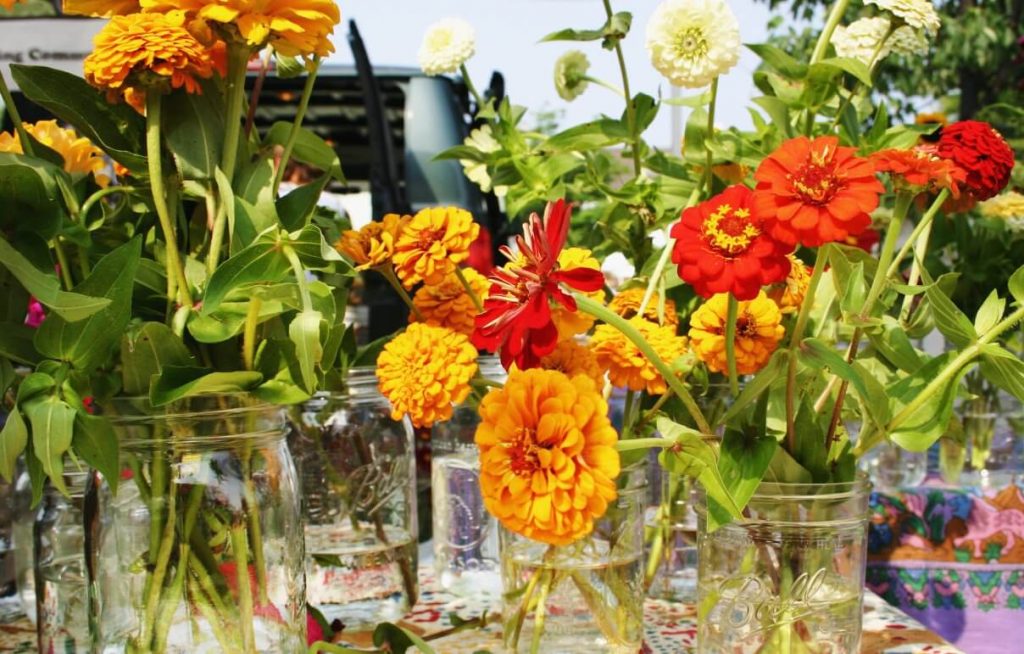Fittonia albivenis, also known as F. verschaffeltii, is a stunning indoor decorative plant with the ability to filter the air. This plant is also known as the nerve plant. The primary appealing aspect of the nerve plant is its leaves’ appurtenance. It is an evergreen perennial that has oval, deep-green leaves with delicate veining.
Fittonia offers many advantages in addition to being attractive and an air purifier. This article will discuss some of the most notable Fittonia plant benefits.
If you are interested in plant benefits, you can also read
<<Lucky Bamboo Plant Benefits>> and <<Croton Plant Benefits>> articles.
About Fittonia
Fittonia argyroneura belongs to the Acanthaceae (Acanthus) family. This tropical plant has eye-catching leaves that are pink and green, white and green, or green and red. Olive green dominates the foliage, with a different color appearing in the veining.
Fittonia argyroneura was discovered in the 19th century. It was named for its discoverers, the botanists Elizabeth and Sarah May Fitton. Nerve plants do bloom; however, when planted inside as a houseplant, the nerve plant rarely displays blossoms.
This vibrant houseplant is native to Peru and other regions of the South American rainforest. It enjoys high humidity but not excessive irrigation. In the proper conditions, this little beauty grows wonderfully in terrariums, hanging baskets, dish gardens, and even as a ground cover [1].
Nerve plant care
Fittonia is a stunning plant, but it may be temperamental and challenging to grow indoors. It needs extremely high, continual humidity, like that found in a terrarium. In addition, nerve plant leaves are susceptible to sunburn from intense, direct sunshine [2].
When grown indoors, a nerve plant should be planted in a peaty commercial potting mixture. The plant needs to be consistently moist with high ambient humidity, which can be achieved by spraying the plant frequently or putting the pot in a tray with water and pebbles.
It prefers strong, indirect sunlight, like that provided by north-facing windows, and dislikes direct sunlight. When the topsoil becomes dry, or the leaves begin to droop, it should be watered.
Fittonia Plant benefits
Fittonia plants are lovely houseplants with dark green leaves with eye-catching red, pink, white, green, and silver veins. Besides being beautiful, these houseplants can offer us various advantages. The following are some of the Fittonia Plant benefits:
Air purification
Today, indoor air pollution is becoming just as problematic as outdoor air pollution. The key factors are household activity and the home’s ventilation system. One of the best solutions is to grow air purifier indoor plants.
One of the key benefits of Fttionia plant is its ability to clean the air. According to Studies, Fittonia plants may aid in the elimination of toluene from indoor air. Toluene can harm the eyes, the upper respiratory tract, necrosis, and the central nervous system.
Gasoline, paint solvents, plastic and drink bottles, paint cosmetics, and other organic chemicals are the primary source of toluene. Fittonia plants can remove toluene from the air; as a result, providing clean, fresh air for breathing.
Easy propagation
The second nerve plant benefit is that it can be multiplied easily. The best method for growing nerve plants is by taking stem-tip cuttings. You can take cuttings in late spring or early summer. You can follow these procedures to propagate this plant:
- Cut stem tips at an angle using clean, sharp garden shears. To get the best results, ensure the cutting has at least two growth nodes on the bottom.
- Insert the cutting’s bottom into a pot with peat-based soil. Although using a rooting hormone is not normally necessary, it might improve your chances of success if your conditions are less than perfect.
- After placing the cutting in a pot, keep the soil moist but not soggy. Roots should start to develop in two to three weeks.
Therapeutic properties
Another Fittonia plant benefit is that it has medical properties. This plant is used for therapeutic purposes in its native habitat. It is known as minakoro by the Amazonian kofan tribe and is used to produce tea to relieve headaches and muscle pain. In the Peruvian Amazon, namely in the Chazuta Valley, people use this herb as an anti-diarrheal for children. It is also used with Tabernaemontana Sancho leaves to cure snake bite wounds [3].
Note: It is important to remember that these claims have not undergone scientific testing and verification. Therefore, utilizing this plant as a medicine may not be effective for all individuals.
Various colors
Fittonia plants are distinguished by the vivid veins that cross their leaves, which give this plant a remarkably distinctive appearance. Depending on the plant variety you pick, these veins in the leaves might have a wide range of colors.
Although silvery-white veins are the most common, variations with red, pink, white, and green veins are also widely available.
Non-toxic
According to ASPCA, Fittonia plants are non-toxic to both humans and animals, so you can feel secure knowing that your children and dogs are safe if they are near a Fittonia plant or swallow a few of its leaves.
Perfect for gifting
When considering gifts, houseplants might not be the first thing that springs to mind, but they are the ideal way to make someone smile on any occasion.
The nerve plant is among the best selections for presents. They are attractive, reasonably sized, vibrant, reasonably priced and safe for both children and pets.
Mental health and stress reduction
Focus and memory can be enhanced by using indoor plants like Fittonia, which bring a sense of tranquility from nature. Additionally, bringing a houseplant to work might improve concentration and lessen stress.
A study found that having plants around your house or place of business can help you feel more natural, comfortable, and at ease. Therefore, putting nerve plants all over the house will help you feel less stressed and agitated, which will increase your productivity.
Fittonia albivenis is blooming
Aesthetic value
That is not all benefits of Fittonia plants. These plants are renowned for their exquisite looks, particularly when you combine all the species to create a lovely centerpiece for your garden or a room in your house.
When these plants are fully grown, they blossom, but they hardly ever do so when kept as house plants. Still, the bright white, pink, or crimson veins in the leaves of these plants can make the plant very eye-catching.
To create a charming appearance in your home with the plant hanging down, put your Fittonia plant in a hanging planter. Fittonia plants make good ornamental plants due to their attractive appearance and adaptability.

